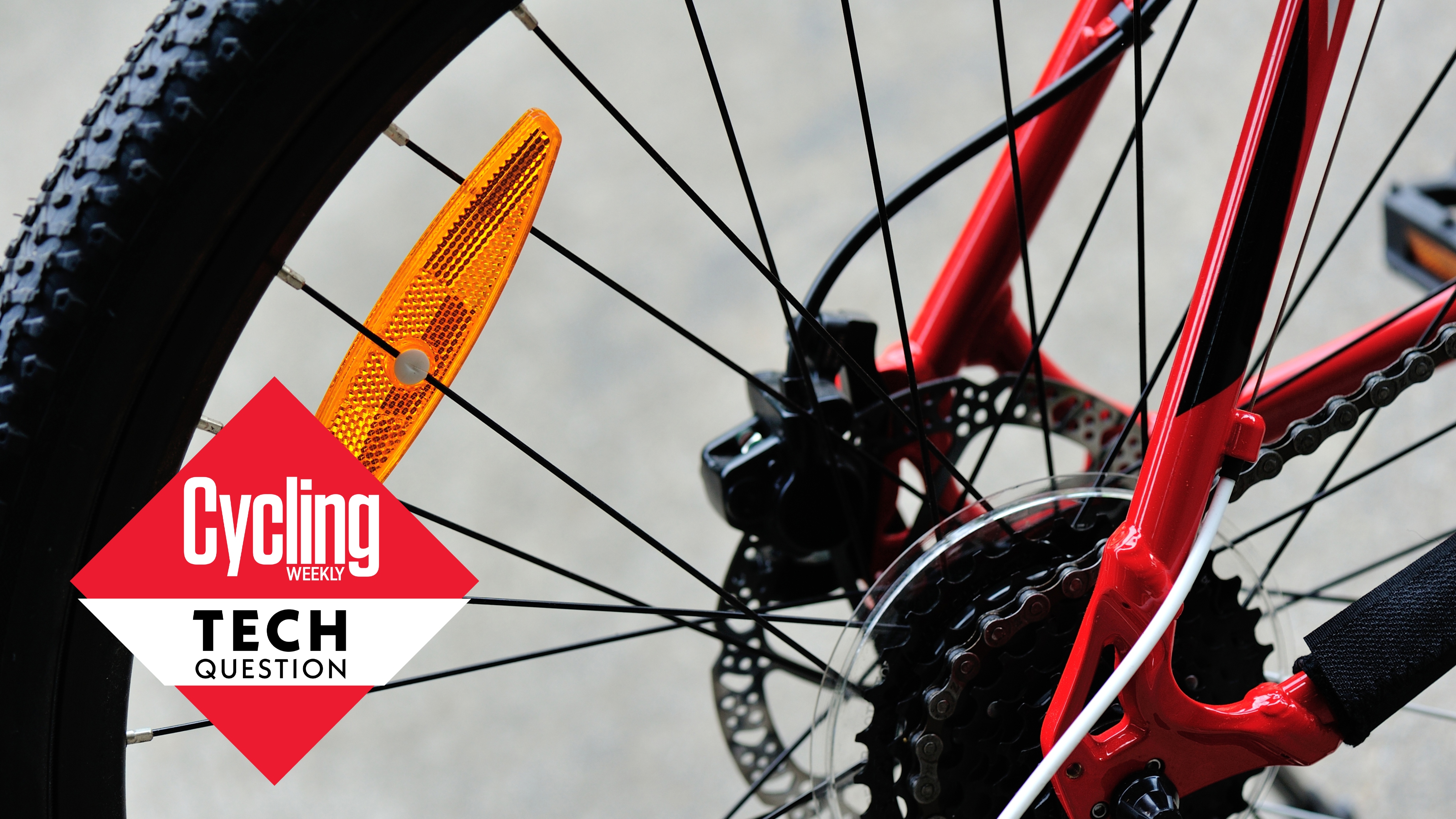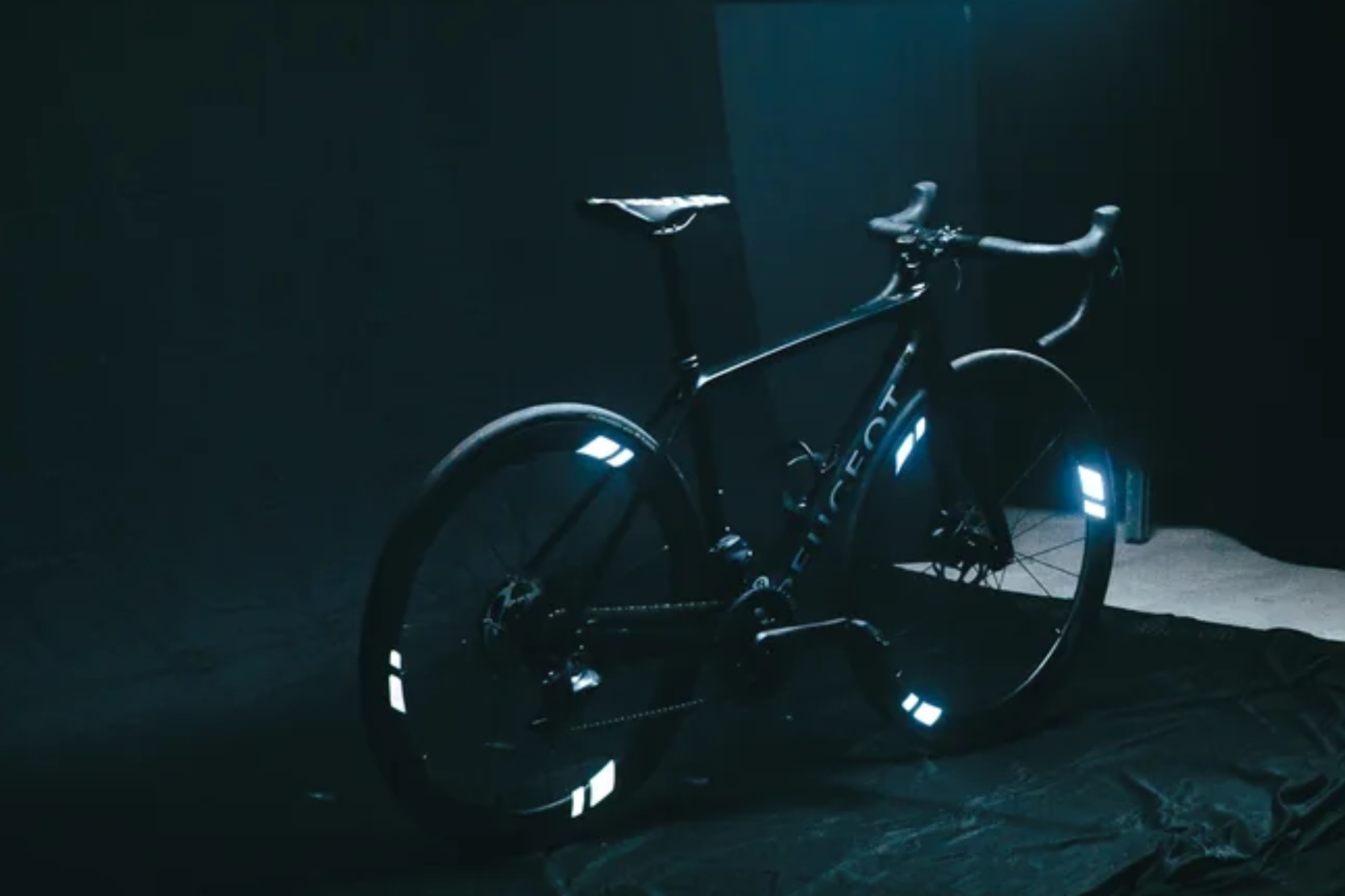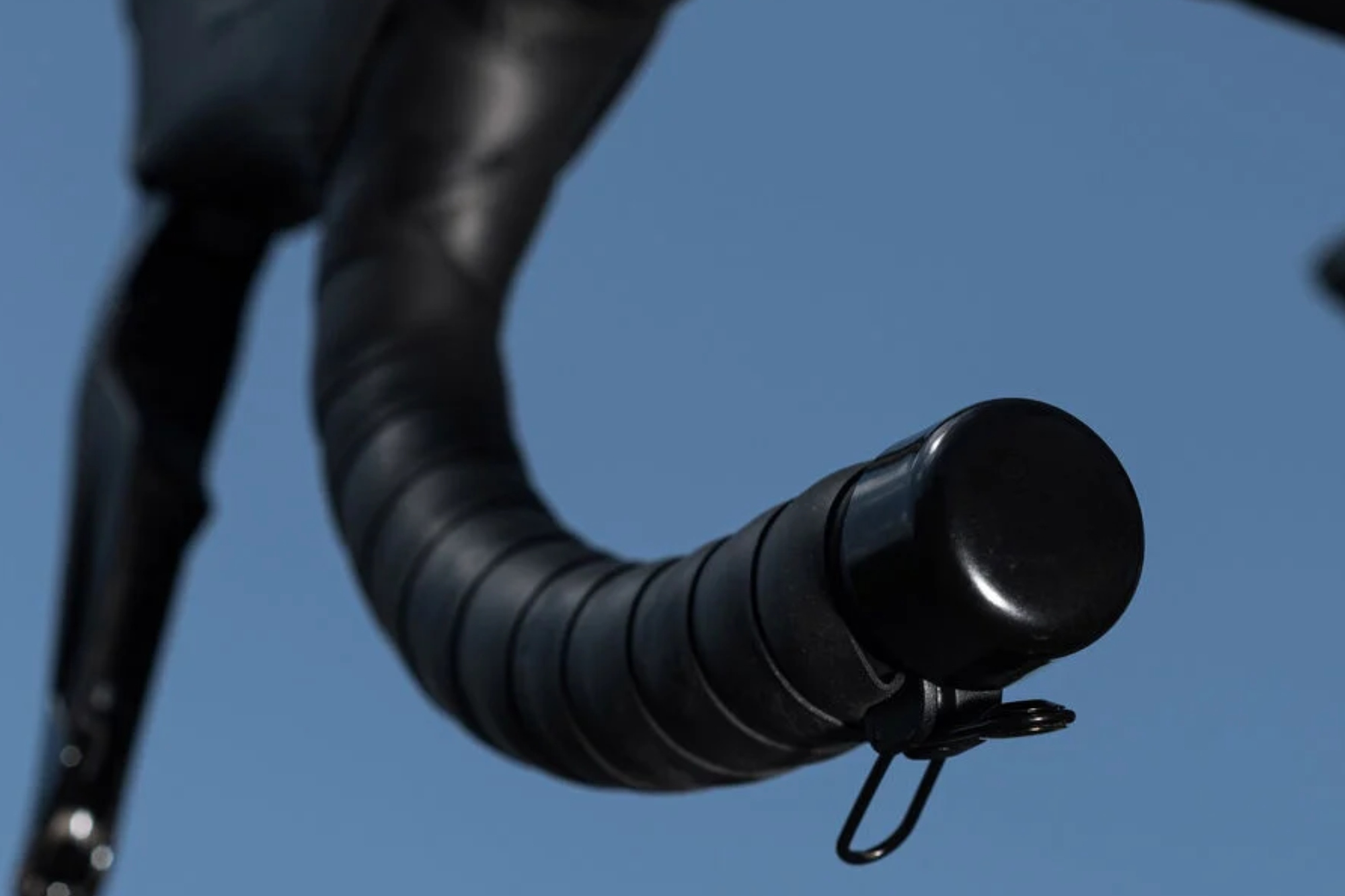Over seven million reflectors are fitted to bikes every year - are government requirements just a giant waste of plastic?
A further 1.88 million bells are produced - many of which are ditched before the inaugural ride


Almost all countries require certain fittings to be applied to bicycles before they're sold. In the UK, a fully built bike requires a front reflector, a rear reflector, as well as front and rear wheel reflectors, and a good old-fashioned bell. This has been the case since 2010.
Requirements are similar in America. In France, even working lights - more often than not the cheapest and most chuckable kind - must be fitted.
Sticking with the UK - according to the Bicycle Association - 1.88 million bikes were sold over the course of 2022. Swift mathematicians amongst you will have already calculated that this is possibly a staggering 7.52 million plastic reflectors, and, obviously, 1.88million bells. In one country alone. The number must be astronomical when it's applied worldwide.
This might be all well and good if consumers were using these reflectors and bells.
However, the former is not a legal requirement unless you're riding between the hours of sunset and sunrise - where most riders would instead use reliable a pair of bike lights to ensure that they're seen on the road. As UK charity for cyclists, Cycling UK, points out, "few police officers will know the finer details of these regulations, and so long as you are showing a white light at the front and a red light at the rear then you are unlikely to be challenged."
When it comes to bells, even a Department for Transport (DfT) report from over a decade ago concluded that "requirement [for bells] should be abolished because bells are useless in traffic" (we'll come to this later).

The upshot of all of this? A huge amount of waste.
Get The Leadout Newsletter
The latest race content, interviews, features, reviews and expert buying guides, direct to your inbox!
"They don't even need to be on the bike at the point of sale," one bicycle retailer - who chose to remain anonymous - informed us. "As long as they don't require a specialist tool to fit, then they can just be given in a box with the customer comes to pick up the bike.
"Many reflectors and bells won't even make it out of the box they come in before heading straight for the trash," he concludes.
“My experience is that people dispose of them,” confirms Erik Bronsvoort , Founder of Circular Cycling, an organisation working with the cycling industry to improve its sustainability record.
“They’ll go to landfill and very likely a lot goes to incineration and don’t forget all the ‘adapters’ to make, and all the packaging involved with these small parts,” Bronsvoort continued.
“The UK isn’t even the worst, in France actual working lights [are required] - too often the cheapest lights with batteries,” he added.
Cheap being the operative word here. With the legal onus on the bike manufacturer to provide reflectors - and most consumers choosing to make themselves seen via more reliable methods such as bike lights - as long as they are marked with the required standard, they'll be made at minimal cost, upping their chuckability status.

At the top end, wind tunnel aerodynamic data wasn’t exactly calculated with the unbecoming reflectors attached to a racing beast, and even those using their bikes to get from A to B report removing them due to concerns over the highly probably impact of them coming loose mid ride.
Bells have become more popular of late. But, like swapping reflectors for bike lights, many riders who actually want a bell will upgrade to one that's louder or more fitting to their requirement.
Why haven't these rules been changed?
So why are we still sticking to these archaic rules? I'm not the first to ponder this question.
In 2013 the Transport Research Laboratory (TRL) undertook and published a Cycle Regulation Review on behalf of the Department for Transport (DfT). Its goal was to "gather, generate and expert-review evidence, from a wide variety of sources, and provide the DfT with costed, practical and appropriate options for legislative change".
The decade-old review makes for interesting reading, including the stakeholder views that the "requirement [for bells] should be abolished because bells are useless in traffic"; it was also noted that "most people remove [reflectors] after purchase" and that "if wheels were on a separate invoice they are not required to attach the reflectors".
The review - in its entirety reaching 85 pages - concluded that simplifying the lighting and bell requirements was likely to have little cost or benefits, although it was generally agreed that most reflectors and bells were removed after purchase.
This conclusion was reached ten years ago, three years after the piece of legislation which enforced their requirement alongside all new bikes.
The Department for Transport is yet to come back to our questions regarding what became of these recommendations. A spokesperson at the TRL informed me that: "As Brexit came not long afterwards, the net result is that there has been no change to anything and a de-coupling from European regulations."
When I reached out to Bicycle Association Technical and Policy Director, Peter Eland, he did tell me that: "where standards compliance is required it is possible to choose whichever 'corresponding' standard is most up to date."
Whilst Eland did say that "there may well be valid safety reasons - to do with angles and percentages of reflected light, performance when wet etcetera - behind [alternatives to reflectors] not being sufficient", he concluded: "it is really unfortunate that this broad-brush regulation imposes such waste (and cost) on all new cycle sales".
Is there any sign of change on the horizon?
"I do know that a couple of interesting EU laws have been adopted, the EU Battery Directive and the EU ESPR (Ecodesign for Sustainable Products) that are very much focused on extending lifecycles of products by improving durability and reparability," Bronsvoort notes. "[These have the effect of] reducing waste by keeping valuable materials in the loop - remanufacturing and recycling - and making recycled content mandatory to create a market for recycled materials."
"These two laws will focus on bigger items - batteries, motors, whole bikes - but I am sure they will encourage people in the industry to rethink the small items too," continues Bronsvoort - before closing out with the biggest impact statement of all.
"Instead of trying to make something of the excess material, the focus should really be on avoiding the waste in the first place."
What are the alternatives?
To remove reflectors (and bells) in their entirety will always be seen as a retrograde in bicycle safety. Most (road bike) riders are always seeking ways to make themselves more visible to other road users, so will are already using alternatives which are far more effective than the throwaway plastic ones.
A relatively recent study (2021) published in ScienceDirect concluded it was white stripes overlaid on red (WRED) colour combination that performed best when increasing the visibility and signal of presence of bicycle at all light level - which is the the pattern most cyclists have naturally migrated towards, in the form of reflective decals on clothing, tape or flashing lights.

Wheel Flash adhesive reflectors
One interesting alternative to the plastic reflector comes from Red Dot design award winner, The Beam. The 2015 founded brand has produced pre-cut adhesive reflectors for frames or wheels, which it says do not affect the aero performance of the bike. They also look significantly less unsightly - and, won't rattle.
Speccing these as an alternative to plastic options would double the cost per bike from current reflector price estimates of around £10, to £30. But many new bike owners would probably opt for this given the choice, as it's a small percentage on top of the cost of a new machine.

The Canyon Road Cycling Bell
When it comes to cycling bells, there are many closet bell enthusiasts, myself included. As a publication, you don't dedicate a full buying guide to the battle of the bells if you don't see their value.
But again, shouldn't there be a choice? Products such as Canyon's road cycling bell seem like a much more palatable choice, the bell acting as an end plug in a dropped bar and therefore freeing up real-estate at the handlebars for vital lights or GPS computers.
While we wait for regulations to catch up with innovation, perhaps a more immediate solution might be a reflector amnesty bin in bike shops. That way, each bike shop would only need one reflector and bell set - and none of them would end up in landfill.

Thank you for reading 20 articles this month* Join now for unlimited access
Enjoy your first month for just £1 / $1 / €1
*Read 5 free articles per month without a subscription

Join now for unlimited access
Try first month for just £1 / $1 / €1
Hannah is Cycling Weekly’s longest-serving tech writer, having started with the magazine back in 2011. She has covered all things technical for both print and digital over multiple seasons representing CW at spring Classics, and Grand Tours and all races in between.
Hannah was a successful road and track racer herself, competing in UCI races all over Europe as well as in China, Pakistan and New Zealand.
For fun, she's ridden LEJOG unaided, a lap of Majorca in a day, won a 24-hour mountain bike race and tackled famous mountain passes in the French Alps, Pyrenees, Dolomites and Himalayas.
She lives just outside the Peak District National Park near Manchester UK with her partner, daughter and a small but beautifully formed bike collection.
-
 'I start every race to win' - Mathieu van der Poel fired up ahead of Paris-Roubaix showdown with Tadej Pogačar
'I start every race to win' - Mathieu van der Poel fired up ahead of Paris-Roubaix showdown with Tadej PogačarTwo-time winner says he has suffered with illness during spring Classics campaign
By Tom Thewlis Published
-
 'It's really surreal that now I'm part of it' - 19-year-old Imogen Wolff set to go from spectator to racer at Paris-Roubaix
'It's really surreal that now I'm part of it' - 19-year-old Imogen Wolff set to go from spectator to racer at Paris-RoubaixBrit first came to see the 'Hell of the North' when she was six
By Tom Davidson Published